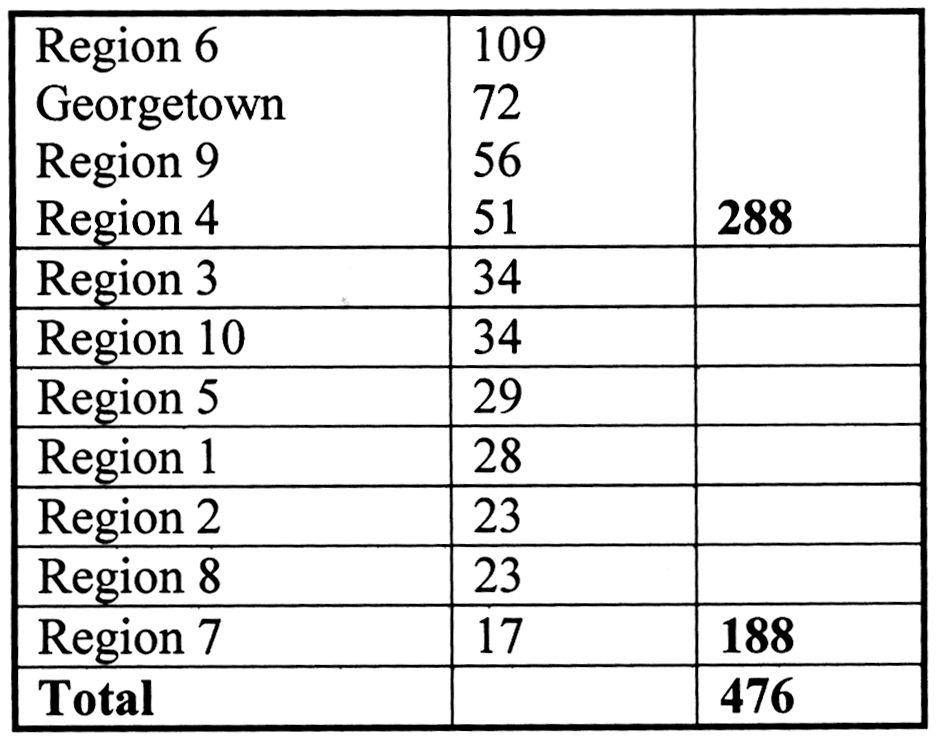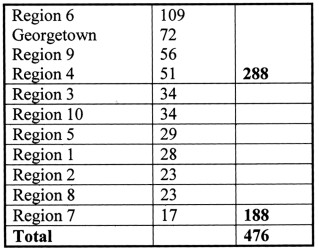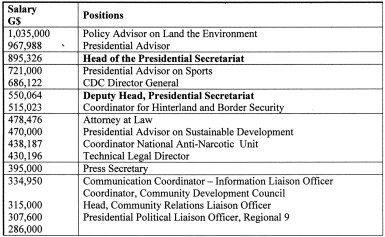Dear Editor,
There have been a considerable number of views offered about increases in pay to both parliamentarians and public servants at this juncture.
First of all any one who has carefully studied the related salaries (and allowances) will quickly recognise that there are substantive gaps in relativities.
In the case of non-ministerial parliamentarians they are poorly paid when one takes into account the level and types of decision-making in which they are perpetually involved, particularly at this rehabilitative juncture. There are permanent secretaries who earn superior pay to those who direct them. Strangely also there is no recognition in financial terms allocated to shadow ministers, a palpable lapse in any compensation regime.
One other such regime is that which applies to traditional public officers as listed in the national budget. A careful perusal will show the lowly range of positions which are better paid than ordinary MPs. One very derisible example is the administrator of the Palms. And of course there is a host of other revealing positions such as a medex who is valued at better rates.
So that when persons talk glibly about MPs’ remuneration they must take into account the level of decision-making in which the respective parties are involved. And that since permanent secretaries at the higher level of salary Grade 14 can earn more than MPs, there needs to be some caution about how anyone pontificates about pay rises in a public service which includes up to five compensation regimes.
Of the latter there is what is jocundly described as that which is grounded in the ‘theory of relativity’ profusely practised by the previous administration, which translated the expression to mean ‘taking care of relatives and friends’. This category made up the bulk of the group of contracted employees, the number of which increased exponentially on an annual basis. In this instance different ministries were free to pay differing values for the same job as say, an accountant. It is this very contracted employee who was generously awarded gratuity every six months at the rate of 22.5% of monthly salary. You can elucidate from this formula above.
But the other type of contracted employee was the one employed in donor-funded projects whose generous remuneration is tax free. So arrangements are continuously made to transfer this employee to another donor-funded project.
Very briefly the next type includes those on annual contract but who are required to apply for renewal at least three months prior to close of contract. So no reply simply meant that employment was terminated. It is no coincidence that this condition applied to cleaner (Gd 1) and office assistant (Gd 2).
But perhaps the greatest travesty was perpetuated by the regional administrations, all of which were headed by a regional executive officer – a position never listed in the national budget. It would be in the new administration’s interest to examine closely the authority of the incumbent of a position that has a wider sweep than a permanent secretary, unlike whom has responsibility spreading across finance, administration, agriculture, public works, education, health, with little indication of qualification criteria, the degree of responsibility and accountability in a very fragile local government structure. The REO too is free to employ contract employees.
So those who express concern about pay increases may not be quite aware how legitimate is their frustration. But it bears no match to mine when it comes to the degrading treatment of teachers, and consequently the beggarly state of our public education system.
The special requirements of the education system must easily be the most anachronistic of any comparable public sector ladder of qualification in Guyana and elsewhere. For example the duty requirements of the Grade 6 Assessment and of CXC respectively earn a salary grade each less than is achievable by a maid/cleaner at the upper end of the scale in the public service.
To make a long story short the teaching service has an actual compensation structure of twenty-nine salary grades compressed into its structure, where the highest level is actually a fixed salary for the like of principal of Queen’s College and Cyril Potter College of Education. (It would appear that regardless, performance appraisal does not apply at this pinnacle of teaching and therefore the latter is not rewarded). In the same breath the word pinnacle is a gross misnomer (if not a degradation) as the salary compares with such public service Grade 11 positions as i) schools inspector; ii) regional education officer; iii) deputy chief planning officer; iv) head, physical education unit; and v) coordinator, home economics and craft.
Also what defies commonsense is the widths of the two sets of scales. In the case of the Teaching Service Commission the widths of purported salary scales range from 4.63% at the lowest to 11.45% at the highest.
Compare this with the public service narrowest scale width of 12.63% at the lowest and 39.86% the widest.
How does one relate the earlier formula in respect of those who have to educate the latter? So it is clear that in the former case an outstanding performance cannot earn even a 5% increase at the lowest levels.
How in the name of commonsense can it be condoned that the people who educate those who become public servants can be treated so disgracefully?
But this maltreatment is by no means limited to financial returns only. And here is where the teachers themselves have contributed to their own malnutrition. It is not as if the Guyana Teachers Union did not create their own dilemma so to speak. It is difficult to believe that their respective executive teams were not studious enough to research comparabilities both locally and overseas.
It is difficult to find a salary structure anywhere with such contradictions as the following substantive position grades as:
Teacher aide (TS 1(A) – which equates to a vehicle driver in the public service.
It is difficult to locate anywhere else a permanent salary scale (TS 1(B) for an acting teacher. How does one reconcile having a permanent ‘acting’ appointment?
This is not only compounded by two separate salary grades; but is reinforced by a number of the following permanent ‘temporary’ appointments:
Temporary Unqualified Assistant (TS2A)
Temporary Qualified Master 3 (TS2B)
Temporary Qualified Master 2 (TS2C)
Temporary Qualified Master 1 TS3
Then there is the admixture of ‘graduate’ and ‘non-graduate’ master and assistant masters – the conundrum being that the one could only graduate from CPCE (after 2 years); while after 4 years at UG the other is but a non-graduate.
What hurts further is that a non-graduate head of department earns some seven salary grades less than his graduate counterpart. These are clearly self-inflicted wounds on the GTU membership who carry the same responsibility – a pattern of discrimination which obtains wherever responsibility and accountability are identical.
So those who dilate about increases in pay in the public service need to understand the facts underlying what they say. In the case of teachers for example there is much more to reveal about vacancies in critical subjects, apart from pay. But as an indicator when the figures were last compared the following Table represented the total advertised vacancies across the regions.
Table 1
Admittedly it needs to be updated.
Hopefully however the point would have been that there is no carte blanche panacea to resolving the problems of the right levels of pay for diverse categories of the public service.
Three final points to be made:
That there are public servants who are paid better than parliamentarians;
Increases for ministers also mean comparable increases for opposition representatives.
Anyone who is aware of compensation being based on the decision band method would appreciate the breadth and depth of decisions now facing the new administration and should appreciate that they should earn increases on what has been an irrational salary structure hitherto.
As a reminder, up to the last elections the following was the pay to parliamentarians.
Table 2
Amongst other disparities the Table indicates the following:
The parliamentary secretary’s decision-making is seen as more valuable than that of:
deputy speaker – by approximately 28%
chief whip – by approximately 31%
other member – by approximately 44%
Compare with the following sample of job values in the Office of the President up to May 2015.
Table 3
*Shown in National Estimates in Band GS06
Yours faithfully,
E B John




